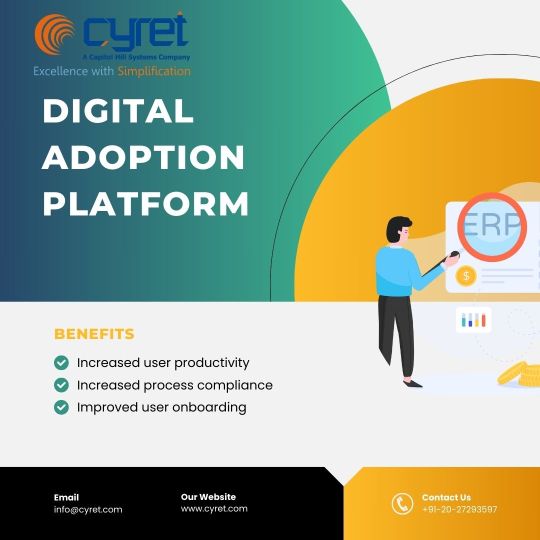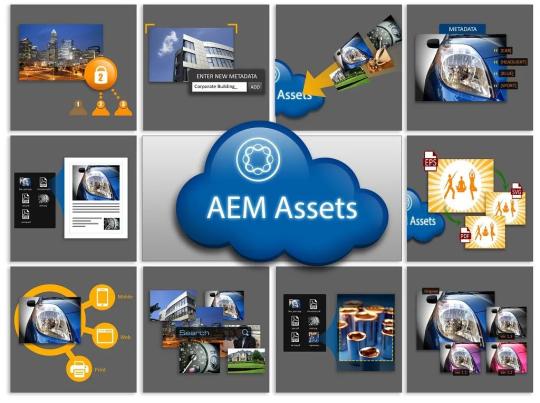#customer experience management platform
Explore tagged Tumblr posts
Text
Buy a trusted customer experience management platform Looking for a platform to manage your CX? Buy a trusted customer experience management platform from us. We can offer a reliable platform with advanced solutions and features used in managing the CX. Call us to book this platform now.
0 notes
Text
How Multi-Location Businesses Can Leverage Positive Reviews for Growth
In today’s competitive market, multi-location businesses face unique challenges in maintaining a strong and consistent reputation across various locations. Positive reviews can play a pivotal role in driving growth and establishing trust among customers. Leveraging these reviews effectively requires a strategic approach, aided by tools such as multi-location reputation management platforms, customer experience management platforms, and email management tools.
Why Positive Reviews Matter
Positive reviews are more than just words of praise; they are powerful testimonials that influence potential customers’ decisions. A study shows that customers are more likely to trust businesses with numerous positive reviews. For multi-location businesses, ensuring a steady stream of positive feedback is essential to maintaining a favorable brand image across all locations.
Centralized Reputation Management
Managing reviews for multiple locations can be daunting without the right tools. Multi-location reputation management platforms simplify this process by providing a centralized dashboard to monitor, analyze, and respond to reviews. These platforms ensure that businesses can maintain consistent communication and address customer feedback promptly, regardless of location. By actively engaging with positive reviews, businesses can show appreciation and build loyalty, encouraging customers to return.
Enhancing Customer Experience
Positive reviews often highlight areas where a business excels, offering insights into what customers value most. Leveraging a customer experience management platform allows businesses to analyze these reviews and identify trends. For example, if customers frequently praise the efficiency of service at one location, businesses can replicate those practices at other locations. This not only boosts customer satisfaction but also ensures a consistent experience across all branches.
Utilizing Email Management Tools
Email management tools are another valuable resource for multi-location businesses looking to leverage positive reviews. These tools can be used to send personalized follow-up emails, thanking customers for their feedback and encouraging them to leave reviews online. Additionally, businesses can use email campaigns to share positive testimonials, building credibility and attracting new customers.
Sharing Positive Reviews Across Platforms
Sharing positive reviews on social media, websites, and promotional materials can amplify their impact. Highlighting feedback from various locations showcases a business’s ability to deliver exceptional service consistently. It also strengthens the brand’s reputation and inspires confidence in prospective customers.
Conclusion
For multi-location businesses, positive reviews are an invaluable asset that can drive growth and enhance customer trust. By leveraging multi-location reputation management platforms, customer experience management platforms, and email management tools, businesses can efficiently harness the power of positive feedback. With the right strategies in place, multi-location businesses can create a unified and trusted brand image that stands out in the marketplace.
#multi location reputation management#email management tools#customer experience management platform
0 notes
Text
Digital Customer Experience Management- Konnect Insights
Digital customer experience management with Konnect Insights optimizes interactions across all digital touchpoints to boost customer satisfaction and loyalty. Utilize advanced tools to streamline, analyze, and enhance your customer journey
#customer experience service#experience solution#digital customer experience management#customer experience management strategy#customer experience platform#experience management software#customer experience management platform#customer experience management software#customer experience software#cx platform#customer experience consulting#cx solutions
0 notes
Text

India's most famous customer experience management software is provided by WovVTech, offering cutting-edge solutions to elevate customer satisfaction and engagement. So What are you waiting for visit our website and book free demo today. Hurry Now!
https://www.wovvtech.com/products/wovvxm-experience-management/
0 notes
Text

Customer Experience Management Platform
Optimize customer satisfaction and loyalty with our cutting-edge customer experience management platform. Streamline interactions, gather valuable insights, and enhance overall customer journey for your business success. To know more, visit: https://www.nextgenholdings.net/our-solutions.html
0 notes
Text
#OpenText Exstream#CCM and CXM#gap between CCM and CXM#Customer Communication Management#Customer Experience Management#CCM systems#CXM platforms#Benefits of Unified CCM#Benefits of Unified CXM
2 notes
·
View notes
Text

Digital Adoption Platform: Boost User Success
Learn how a Digital Adoption Platform (DAP) can help your company thrive in the digital age. A DAP can help you track and analyze user behavior, provide real-time guidance and onboarding, and accelerate productivity with automation.
#Digital Adoption Platform (DAP)#Employee Onboarding#User Adoption#Digital Transformation#User Experience (UX)#User Interface (UI)#Software Training#Change Management#Employee Training#Customer Onboarding#Digital Workplace#SaaS
0 notes
Text
Jeremy Kelway, VP of Engineering for Analytics, Data, and AI at EDB – Interview Series
New Post has been published on https://thedigitalinsider.com/jeremy-kelway-vp-of-engineering-for-analytics-data-and-ai-at-edb-interview-series/
Jeremy Kelway, VP of Engineering for Analytics, Data, and AI at EDB – Interview Series
Jeremy (Jezz) Kelway is a Vice President of Engineering at EDB, based in the Pacific Northwest, USA. He leads a team focused on delivering Postgres-based analytics and AI solutions. With experience in Database-as-a-Service (DBaaS) management, operational leadership, and innovative technology delivery, Jezz has a strong background in driving advancements in emerging technologies.
EDB supports PostgreSQL to align with business priorities, enabling cloud-native application development, cost-effective migration from legacy databases, and flexible deployment across hybrid environments. With a growing talent pool and robust performance, EDB ensures security, reliability, and superior customer experiences for mission-critical applications.
Why is Postgres increasingly becoming the go-to database for building generative AI applications, and what key features make it suitable for this evolving landscape?
With nearly 75% of U.S. companies adopting AI, these businesses require a foundational technology that will allow them to quickly and easily access their abundance of data and fully embrace AI. This is where Postgres comes in.
Postgres is perhaps the perfect technical example of an enduring technology that has reemerged in popularity with greater relevance in the AI era than ever before. With robust architecture, native support for multiple data types, and extensibility by design, Postgres is a prime candidate for enterprises looking to harness the value of their data for production-ready AI in a sovereign and secure environment.
Through the 20 years that EDB has existed, or the 30+ that Postgres as a technology has existed, the industry has moved through evolutions, shifts and innovations, and through it all users continue to “just use Postgres” to tackle their most complex data challenges.
How is Retrieval-Augmented Generation (RAG) being applied today, and how do you see it shaping the future of the “Intelligent Economy”?
RAG flows are gaining significant popularity and momentum, with good reason! When framed in the context of the ‘Intelligent Economy’ RAG flows are enabling access to information in ways that facilitate the human experience, saving time by automating and filtering data and information output that would otherwise require significant manual effort and time to be created. The increased accuracy of the ‘search’ step (Retrieval) combined with being able to add specific content to a more widely trained LLM offers up a wealth of opportunity to accelerate and enhance informed decision making with relevant data. A useful way to think about this is as if you have a skilled research assistant that not only finds the right information but also presents it in a way that fits the context.
What are some of the most significant challenges organizations face when implementing RAG in production, and what strategies can help address these challenges?
At the fundamental level, your data quality is your AI differentiator. The accuracy of, and particularly the generated responses of, a RAG application will always be subject to the quality of data that is being used to train and augment the output. The level of sophistication being applied by the generative model will be less beneficial if/where the inputs are flawed, leading to less appropriate and unexpected results for the query (often referred to as ‘hallucinations’). The quality of your data sources will always be key to the success of the retrieved content that is feeding the generative steps—if the output is desired to be as accurate as possible, the contextual data sources for the LLM will need to be as up to date as possible.
From a performance perspective; adopting a proactive posture about what your RAG application is attempting to achieve—along with when and where the data is being retrieved—will position you well to understand potential impacts. For instance, if your RAG flow is retrieving data from transactional data sources (I.e. constantly updated DB’s that are critical to your business), monitoring the performance of those key data sources, in conjunction with the applications that are drawing data from these sources, will provide understanding as to the impact of your RAG flow steps. These measures are an excellent step for managing any potential or real-time implications to the performance of critical transactional data sources. In addition, this information can also provide valuable context for tuning the RAG application to focus on appropriate data retrieval.
Given the rise of specialized vector databases for AI, what advantages does Postgres offer over these solutions, particularly for enterprises looking to operationalize AI workloads?
A mission-critical vector database has the ability to support demanding AI workloads while ensuring data security, availability, and flexibility to integrate with existing data sources and structured information. Building an AI/RAG solution will often utilize a vector database as these applications involve similarity assessments and recommendations that work with high-dimensional data. The vector databases serve as an efficient and effective data source for storage, management and retrieval for these critical data pipelines.
How does EDB Postgres handle the complexities of managing vector data for AI, and what are the key benefits of integrating AI workloads into a Postgres environment?
While Postgres does not have native vector capability, pgvector is an extension that allows you to store your vector data alongside the rest of your data in Postgres. This allows enterprises to leverage vector capabilities alongside existing database structures, simplifying the management and deployment of AI applications by reducing the need for separate data stores and complex data transfers.
With Postgres becoming a central player in both transactional and analytical workloads, how does it help organizations streamline their data pipelines and unlock faster insights without adding complexity?
These data pipelines are effectively fueling AI applications. With the myriad data storage formats, locations, and data types, the complexities of how the retrieval phase is achieved quickly become a tangible challenge, particularly as the AI applications move from Proof-of-Concept, into Production.
EDB Postgres AI Pipelines extension is an example of how Postgres is playing a key role in shaping the ‘data management’ part of the AI application story. Simplifying data processing with automated pipelines for fetching data from Postgres or object storage, generating vector embeddings as new data is ingested, and triggering updates to embeddings when source data changes—meaning always-up-to-date data for query and retrieval without tedious maintenance.
What innovations or developments can we expect from Postgres in the near future, especially as AI continues to evolve and demand more from data infrastructure?
The vector database is by no means a finished article, further development and enhancement is expected as the utilization and reliance on vector database technology continues to grow. The PostgreSQL community continues to innovate in this space, seeking methods to enhance indexing to allow for more complex search criteria alongside the progression of the pgvector capability itself.
How is Postgres, especially with EDB’s offerings, supporting the need for multi-cloud and hybrid cloud deployments, and why is this flexibility important for AI-driven enterprises?
A recent EDB study shows that 56% of enterprises now deploy mission-critical workloads in a hybrid model, highlighting the need for solutions that support both agility and data sovereignty. Postgres, with EDB’s enhancements, provides the essential flexibility for multi-cloud and hybrid cloud environments, empowering AI-driven enterprises to manage their data with both flexibility and control.
EDB Postgres AI brings cloud agility and observability to hybrid environments with sovereign control. This approach allows enterprises to control the management of AI models, while also streamlining transactional, analytical, and AI workloads across hybrid or multi-cloud environments. By enabling data portability, granular TCO control, and a cloud-like experience on a variety of infrastructures, EDB supports AI-driven enterprises in realizing faster, more agile responses to complex data demands.
As AI becomes more embedded in enterprise systems, how does Postgres support data governance, privacy, and security, particularly in the context of handling sensitive data for AI models?
As AI becomes both an operational cornerstone and a competitive differentiator, enterprises face mounting pressure to safeguard data integrity and uphold rigorous compliance standards. This evolving landscape puts data sovereignty front and center—where strict governance, security, and visibility are not just priorities but prerequisites. Businesses need to know and be certain about where their data is, and where it’s going.
Postgres excels as the backbone for AI-ready data environments, offering advanced capabilities to manage sensitive data across hybrid and multi-cloud settings. Its open-source foundation means enterprises benefit from constant innovation, while EDB’s enhancements ensure adherence to enterprise-grade security, granular access controls, and deep observability—key for handling AI data responsibly. EDB’s Sovereign AI capabilities build on this posture, focusing on bringing AI capability to the data, thus facilitating control over where that data is moving to, and from.
What makes EDB Postgres uniquely capable of scaling AI workloads while maintaining high availability and performance, especially for mission-critical applications?
EDB Postgres AI helps elevate data infrastructure to a strategic technology asset by bringing analytical and AI systems closer to customers’ core operational and transactional data—all managed through Postgres. It provides the data platform foundation for AI-driven apps by reducing infrastructure complexity, optimizing cost-efficiency, and meeting enterprise requirements for data sovereignty, performance, and security.
An elegant data platform for modern operators, developers, data engineers, and AI application builders who require a battle-proven solution for their mission-critical workloads, allowing access to analytics and AI capabilities whilst using the enterprise’s core operational database system.
Thank you for the great interview, readers who wish to learn more should visit EDB.
#ADD#agile#ai#AI models#AI systems#Analytics#application development#applications#approach#apps#architecture#Article#background#Building#Business#challenge#Cloud#Cloud-Native#Community#Companies#complexity#compliance#content#customer experiences#data#Data Governance#data integrity#Data Management#data pipelines#data platform
0 notes
Text
On-demand and Customized Learning Management System
Tecnolynx designs adaptive learning pathways through a personalized, reliable, and user-friendly learning management system (LMS) platform. Our skilled developers excel in creating custom LMS solutions, handling integration, and overseeing implementation, all tailored to fit your unique learning requirements.
Looking for a powerful LMS solution? Connect with Tecnolynx for a customized and robust learning management system tailored to your needs.
#Learning Management System (LMS)#eLearning solutions#LMS development#Customized eLearning platforms#Online training software#Virtual learning environments#Educational technology solutions#Learning content management system (LCMS)#Interactive learning experiences#Personalized learning platforms
0 notes
Text
Dominating the Market with Cloud Power

Explore how leveraging cloud technology can help businesses dominate the market. Learn how cloud power boosts scalability, reduces costs, enhances innovation, and provides a competitive edge in today's digital landscape. Visit now to read more: Dominating the Market with Cloud Power
#ai-driven cloud platforms#azure cloud platform#business agility with cloud#business innovation with cloud#capital one cloud transformation#cloud adoption in media and entertainment#cloud computing and iot#cloud computing for business growth#cloud computing for financial institutions#cloud computing for start-ups#cloud computing for travel industry#cloud computing in healthcare#cloud computing landscape#Cloud Computing solutions#cloud for operational excellence#cloud infrastructure as a service (iaas)#cloud migration benefits#cloud scalability for enterprises#cloud security and disaster recovery#cloud solutions for competitive advantage#cloud solutions for modern businesses#Cloud storage solutions#cloud technology trends#cloud transformation#cloud-based content management#cloud-based machine learning#cost-efficient cloud services#customer experience enhancement with cloud#data analytics with cloud#digital transformation with cloud
1 note
·
View note
Text
Adobe 解決方案如何推動台灣與香港企業的數位轉型
隨著全球市場的快速變化,企業必須不斷適應數位化的需求,以保持競爭力。對於台灣與香港的企業而言,Adobe 解決方案提供了一個強大的工具,幫助他們實現數位轉型,提升業務效率並改善客戶體驗。本文將探討 Adobe 如何透過其一系列創新解決方案,推動台灣與香港企業的數位化進程。
1. 全面的數位行銷平台
Adobe Experience Cloud 是 Adobe 的旗艦產品之一,它為企業提供了一個綜合的數位行銷平台,從客戶數據分析、跨渠道營銷到自動化營銷策略,無一不包。對於台灣與香港的企業,Adobe Experience Cloud 能夠幫助他們 深入了解客戶行為,並根據這些數據制定個性化行銷策略,從而提高轉換率與品牌忠誠度。

2. 簡化內容創作與管理
無論是台灣還是香港的企業,數位內容的創作和管理都是數位轉型的重要組成部分。Adobe Creative Cloud 為企業提供了領先的設計工具,如 Photoshop、Illustrator 和 Premiere Pro,幫助團隊更有效地創作內容。與此同時,Adobe Experience Manager (AEM) 則提供了內容管理的強大功能,讓企業能夠更快速地推出和更新網站、應用程式及其他數位資產,確保內容始終保持新鮮和相關性。
3. 提升客戶體驗與互動
客戶體驗是現代商業成功的關鍵因素之一。Adobe Target 透過人工智慧技術,幫助企業根據客戶的喜好與行為,提供個性化的體驗。台灣與香港的企業可以藉助 Adobe Target 實現精準的行銷活動,確保每位客戶在訪問網站或應用程式時,都能獲得量身訂做的內容。
4. 強大的數據分析與洞察
數據驅動的決策對於現代企業來說至關重要,特別是在競爭激烈的台灣與香港市場中。Adobe Analytics 提供了深入的數據分析能力,幫助企業了解其數位行銷策略的效果,並及時調整。通過追蹤用戶的行為路徑,企業可以更好地理解客戶需求,進而優化其行銷和業務策略。
5. 跨渠道的無縫整合
現代消費者通過多種渠道與品牌互動,從網站到社交媒體,再到電子郵件行銷。Adobe 的解決方案,如 Adobe Campaign,能夠幫助企業無縫整合這些渠道,實現跨平台的行銷協同。這對於擁有大量線上及線下活動的台灣與香港企業尤為重要,因為他們可以藉此確保每個渠道的訊息一致性,並根據實時數據調整行銷活動。

結論
Adobe 解決方案憑藉其強大的數位行銷、內容管理與數據分析工具,已成為台灣與香港企業數位轉型的首選合作夥伴。企業透過 Adobe 的創新技術,不僅可以提升營運效率,還能改善客戶體驗,從而在日益數位化的市場中取得成功。
了解更多 Adobe 解決方案如何幫助您的企業數位轉型,請訪問 Leads Technologies。
部落格來源網址
#cms hong kong#cms taiwan#Adobe Analytics#Adobe Campaign#Adobe Commerce#Digital Asset Management System#Adobe Journey Optimizer#Adobe Customer Journey Analytics#Magnolia CMS#Adobe Experience Platform#Adobe Partner#Adobe Partner Hong Kong#Adobe Partner Taiwan#Adobe Solution Partner#Adobe Target#TVP#Technology Voucher Programme#Adobe Experience Manager#tvp application#tvp申请#科技券 申请 指南#網站設計 台灣#網站設計香港#科技券#科技券 供應商#科技券申请#香港科技券#AEM公司#adobe 台湾#adobe香港
0 notes
Text
Essential Tools and Technologies for Effective Omnichannel Customer Support
In today’s competitive landscape, omnichannel customer service is essential for meeting customer expectations across multiple touchpoints. This approach allows businesses to deliver consistent and seamless experiences, whether customers interact through social media, chat, email, or phone. For an effective omnichannel strategy, leveraging the right tools and technologies is crucial. Here’s a look at the must-have solutions:
1. AI Chatbots for Business
AI chatbots have become vital for providing instant responses and 24/7 support, enhancing customer satisfaction and retention. An AI chatbot for business can help address common customer queries, route complex issues to human agents, and improve response times. With the ability to personalize interactions based on previous conversations, chatbots ensure a cohesive experience across channels. They not only save valuable time for customer service teams but also help in boosting customer engagement.
2. Customer Experience Management (CXM) Platforms
A customer experience management platform is essential for collecting and analyzing customer data from various touchpoints. By integrating customer insights across channels, a CXM platform enables businesses to understand customer preferences, pain points, and satisfaction levels. This comprehensive data helps companies improve the customer journey, providing valuable insights for refining their omnichannel customer service strategy. CXM platforms also facilitate personalized interactions, which is key to meeting customer expectations in an omnichannel environment.
3. Unified Communication Platforms
Unified communication tools allow seamless switching between channels — enabling customers to start a conversation on one channel (e.g., social media) and continue it on another (e.g., email) without losing context. These platforms integrate phone, chat, email, and social media, providing a holistic view of the customer’s history and interactions. They streamline communication for customer service teams, enhancing efficiency and ensuring consistency across channels.
4. CRM (Customer Relationship Management) Systems
An effective CRM system centralizes customer data, ensuring that all customer-facing teams have access to the same information. This alignment allows agents to provide informed, personalized assistance across various channels, contributing to a positive customer experience. CRMs also support omnichannel strategies by offering analytics that highlight customer trends, enabling businesses to anticipate needs and respond proactively.
5. Analytics and Reporting Tools
For ongoing success in omnichannel customer service, analytics tools are essential. These solutions measure performance across channels, helping businesses identify areas of improvement and understand customer behavior. With insights into response times, customer satisfaction, and engagement metrics, companies can refine their approach to deliver exceptional support.
Conclusion: Investing in the right tools, such as an AI chatbot for business, a customer experience management platform, and other key technologies — is essential for any organization aiming to excel in omnichannel customer service. These tools not only enhance operational efficiency but also provide valuable insights for delivering a superior customer experience. By leveraging these technologies, businesses can ensure they’re ready to meet the evolving demands of today’s customers.
0 notes
Text

The Future of Security: How the Metaverse is Transforming User Authentication
User authentication is the bedrock of security in the metaverse, a vast and growing digital realm. As users engage in a variety of activities, from socializing to conducting business, the need for secure verification methods becomes increasingly vital. The term 'User Authentication' refers to methods whereby a visitor to a site or platform, or the user of an app, must prove their identity and their right to carry out certain activities or transactions within that resource before they may proceed. Without strong authentication protocols, the integrity of the metaverse could be compromised, leading to potential fraud and other security threats. It is a means to prevent fraud, ensuring that interactions within this digital space are trustworthy and secure.
#user authentication#digital identity management#digital security#data security#mfa#social login#passwordless authentication#consumer iam solutions#passwordless login#customer identity and access management#ciam solutions#login security#identity verification#single sign on solutions#identity proofing#customer experience#ciam platform#multi factor authentication solutions#multi factor authentication
0 notes
Text

WovVXM is a cloud-based experience management software used to record and improve experiences through feedback. Know your customers and improve their experience at multiple touchpoints with our feedback tool.
https://www.wovvtech.com/products/wovvxm-experience-management/
#experience management software#customer experience management software#customer experience management platform#customer experience management tools
0 notes
Text
Unlock Your Restaurant's Full Potential with IntelliBooks

In the bustling world of restaurants, managing daily operations efficiently while delivering exceptional customer experiences is crucial. IntelliBooks, a cutting-edge restaurant management software solution, is designed to streamline your processes, improve efficiency, and elevate your restaurant’s performance. This blog explores how IntelliBooks can transform your restaurant operations, from point of sale systems and online ordering to inventory control and customer engagement.
Comprehensive Restaurant Management with IntelliBooks
Running a successful restaurant involves handling multiple tasks simultaneously. IntelliBooks simplifies these tasks by integrating all aspects of restaurant management into a single, user-friendly platform. This all-in-one solution covers everything from POS systems and mobile ordering to kitchen management and takeaway services, ensuring seamless operations and improved efficiency.
1. Point of Sale (POS) Systems:
At the core of IntelliBooks is its robust Point of Sale (POS) system, designed to handle everything from order processing and payments to sales tracking. This system ensures quick and accurate transactions, reducing wait times and enhancing customer satisfaction. Real-time sales tracking provides valuable insights into your restaurant’s performance, allowing you to make data-driven decisions to optimize your menu, staffing, and inventory.
For dynamic setups like food trucks or outdoor cafes, IntelliBooks offers a mobile POS system. This feature allows staff to take orders and process payments from anywhere, improving flexibility and customer service. The mobile POS system syncs seamlessly with the main POS and inventory systems, ensuring real-time updates and accuracy.
2. Online Ordering:
In today's digital age, offering online ordering is essential for any restaurant. IntelliBooks integrates seamlessly with your existing operations to manage online orders for delivery and pickup. Customers can place orders through your website or app, customize their meals, and pay online, providing convenience and boosting sales. This system reduces errors associated with manual order taking, ensuring accuracy and efficiency.
3. Inventory Management with IntelliScan:
Efficient inventory management is critical to a restaurant’s success. IntelliBooks' IntelliScan feature uses scanning technology to quickly update inventory levels, track usage, and manage stock efficiently. This feature reduces errors and optimizes supply chain management, ensuring that you never run out of essential ingredients.
IntelliScan improves coordination with suppliers by tracking stock levels and reorder points. This ensures timely reorders and prevents stockouts, which can disrupt service and affect customer satisfaction. Efficient inventory control leads to cost savings and better operational planning, helping you manage your restaurant more effectively.
4. Enhancing Customer Experience:
An organized kitchen is key to a restaurant's success. IntelliBooks’ kitchen order management system ensures smooth communication and workflow. Digital orders are clearly displayed for kitchen staff, reducing misunderstandings and errors. This system helps prioritize orders to ensure timely preparation and delivery, keeping the kitchen running efficiently. Additionally, it synchronizes with the POS and inventory systems to track ingredient usage and manage stock levels effectively.
For restaurants offering takeaway services, IntelliBooks provides a comprehensive solution to manage orders and ensure customer satisfaction. The system efficiently handles takeaway orders alongside dine-in and delivery services, keeping customers informed about the status of their orders with automated notifications. It allows customers to schedule their pickups, reducing wait times and enhancing convenience. This organized approach ensures a smooth takeaway experience for both customers and staff.
5. Customer Engagement and Loyalty Programs:
In the competitive restaurant industry, building strong customer relationships is essential. IntelliBooks offers tools to enhance customer engagement, including personalized service, loyalty programs, and targeted promotions. By understanding customer preferences and behaviors, you can tailor your offerings and marketing efforts to improve customer satisfaction and retention.
Real-Time Analytics and Insights
IntelliBooks provides powerful analytics tools that offer detailed insights into various aspects of your restaurant’s performance. These analytics help identify sales trends, best-selling items, and peak sales times, allowing you to optimize menu offerings and staffing. By analyzing customer data, you can understand preferences and tailor marketing efforts, enhancing customer engagement. The analytics also monitor operational efficiencies, helping you reduce costs and boost profitability. With IntelliBooks, you gain a comprehensive understanding of your business, empowering you to make informed decisions that drive success.
The platform generates detailed reports on sales, inventory, and employee performance. These reports can be customized to focus on specific areas of interest, providing you with the information you need to make strategic decisions. For instance, you can identify which menu items are most popular and adjust your offerings accordingly. You can also monitor employee performance to ensure that your staff is meeting expectations and contributing to the restaurant’s success.
Benefits for All Stakeholders
IntelliBooks is designed to offer benefits to all stakeholders within the restaurant ecosystem, ensuring a seamless and profitable dining experience.
1. For Restaurant Owners:
Restaurant owners can leverage IntelliBooks to gain comprehensive control over their operations, enhancing efficiency and profitability. The platform integrates all aspects of restaurant management into one, making it easier to use. Detailed analytics allow owners to make informed business decisions and optimize performance. Improved inventory management and reduced waste result in significant cost savings.
2. For Staff:
Staff members benefit from IntelliBooks' user-friendly interfaces and efficient workflow management tools. Simplified interfaces make it easy for staff to learn and use the system effectively. Seamless integration between the front of house and kitchen ensures clear communication and order accuracy, enhancing productivity and allowing staff to focus on providing excellent customer service.
3. For Franchisees:
Franchisees can maintain consistency and streamline operations across multiple locations with IntelliBookss. The platform ensures uniformity in operations and customer experience across all franchise locations. It is scalable, allowing franchisees to manage multiple locations from a centralized platform. Performance metrics for each location can be tracked to identify areas for improvement.
4. For Customers:
Customers enjoy a superior dining experience with the convenience and efficiency provided by IntelliBooks. Faster order processing and reduced wait times enhance the overall dining experience. Customers can easily customize their orders, ensuring satisfaction. IntelliBooks provides a seamless experience from online ordering to takeaway, ensuring smooth and convenient service.
Why Choose IntelliBooks?
IntelliBooks stands out in the restaurant management software market for several reasons. It offers a comprehensive solution that covers all aspects of restaurant management, from POS systems to inventory control, ensuring that all operational needs are met within a single platform. The intuitive design of IntelliBooks makes it easy for staff to learn and use, reducing training time and enhancing productivity. Powerful analytics tools provide valuable insights into sales trends, customer preferences, and operational efficiencies, enabling informed business decisions. Seamless integration with other systems and tools ensures that all aspects of your restaurant’s operations are connected, enhancing workflow efficiency and reducing the risk of errors.
IntelliBooks is also scalable, supporting the management of multiple locations from a centralized dashboard, ensuring consistency and control across your entire operation. Robust customer support helps you get the most out of the platform, from onboarding and training to ongoing assistance, ensuring your success.
Conclusion
In the competitive restaurant industry, efficiency and customer satisfaction are key to success. IntelliBooks provides a comprehensive, user-friendly solution that integrates all aspects of restaurant management into one powerful platform. With features designed to streamline operations, enhance customer engagement, and provide valuable insights, IntelliBooks empowers restaurants to thrive in today’s market. Whether you run a dine-in restaurant, a quick-service outlet, a cloud kitchen, or any other type of dining establishment, IntelliBooks has the tools to help you succeed. Visit us at intellibooks.io and take the first step toward a more efficient and profitable restaurant.
Read More at IntelliBooks.io
LinkedIn- https://www.linkedin.com/company/intellibooks/
Facebook- https://www.facebook.com/intellibooks?mibextid=LQQJ4d
Instagram- https://www.instagram.com/intelli_books/?igshid=MzRlODBiNWFlZA%3D%3D
Pinterest- https://in.pinterest.com/IntelliBooks/
Medium- https://medium.com/@intelligentblock2018
#RestaurantManagement #POSSystems #FoodServiceTech #CustomerSatisfaction #RestaurantSuccess #EfficiencyBoost #TechInRestaurants #HospitalityTech
#Revolutionize Your Restaurant with IntelliBooks#Visit intellibooks.io for a complete restaurant management solution that streamlines operations#enhances customer engagement#and provides real-time analytics. Our platform integrates POS systems#online ordering#inventory control#and staff management to boost your restaurant’s efficiency and profitability. Experience the IntelliBooks advantage and take your restauran#Read More at IntelliBooks.io#LinkedIn- https://www.linkedin.com/company/intellibooks/#Facebook- https://www.facebook.com/intellibooks?mibextid=LQQJ4d#Instagram- https://www.instagram.com/intelli_books/?igshid=MzRlODBiNWFlZA%3D%3D#Pinterest- https://in.pinterest.com/IntelliBooks/#Medium- https://medium.com/@intelligentblock2018#RestaurantManagement#POSSystems#CustomerSatisfaction#FoodServiceTech#HospitalityInnovation#BusinessGrowth#EfficiencyBoost#RestaurantSuccess
0 notes
Text
Best Practices for a Successful OpenText Exstream Upgrade

Customer communications management (CCM) tools like OpenText Exstream are critical to delivering personalized, efficient customer experiences. Upgrading to the latest version can significantly improve your organization's communications capabilities, but requires careful planning and execution. Here are key best practices for a successful OpenText Exstream upgrade.
1. Perform a Comprehensive Assessment Before Upgrading
Before you begin the upgrade, thoroughly analyze your current OpenText Exstream environment. Analyze the existing workflows, templates and integrations. Identify custom configurations and third-party add-ons that may be affected. This assessment will help you identify challenges and develop effective remediation strategies.
2. Use Upgrade documentation and Release Notes
OpenText provides detailed documentation for each new version. Read these resources carefully to understand new features, enhancements and resolved issues. Pay attention to the release notes to learn about outdated features or potential compatibility issues with your current installation.
3. Implement Solid Data Migration and Backup Strategies
Back up your important data before proceeding with the upgrade. Create comprehensive backups of all templates, resources and configuration files. Develop a detailed data migration plan, especially if the upgrade involves significant data structure or storage mechanism changes.
4. Use a Staging Environment for Thorough Testing
Never perform an upgrade directly in production. Create a staging environment that is very similar to your production environment. Use this environment to thoroughly test the upgrade process, including data migration, application functionality and performance. This crucial step will help you identify and resolve issues before they impact your production environment.
5. Provide Comprehensive Training on the New Features
Upgrades often introduce new features and change existing functionality. Invest in thorough training to ensure your team can fully utilize the new features of OpenText Exstream. Effective training shortens the learning curve and maximizes the return on your upgrade investment.
6. Implement Rigorous Post-Upgrade Monitoring
Closely monitor system performance after the upgrade, focusing on document creation speed, delivery accuracy and overall stability. Implement proactive monitoring tools to quickly detect and resolve anomalies and minimize the potential impact on end users.
7. Get Actively Involved in the OpenText Community
Tap into the extensive knowledge of the OpenText user community. Exchange ideas with like-minded people who have successfully gone through the upgrade process. Their insights can give you valuable, practical advice and help you avoid common pitfalls.
8. Plan the Upgrade Strategically
Choose an optimal time for the upgrade to minimize disruption to operations. Plan the process during a period of low activity and ensure that all parties involved are informed in good time. Provide regular updates during the upgrade to maintain transparency and manage expectations.
9. Prioritize Compliance and Security Measures
Upgrades can impact compliance with industry regulations and internal policies. Ensure that the new version of OpenText Exstream meets all necessary compliance requirements. Conduct a thorough review of security settings and policies to ensure they align with the upgraded system and your organization's security standards.
10. Develop a Comprehensive Rollback Plan
Despite careful planning, unforeseen problems can occur. Create a detailed rollback plan to revert to the previous version in the event of critical issues. This plan should include steps to restore data from backups and minimize downtime.
Upgrading from OpenText Exstream is a strategic initiative that can significantly improve your organization's ability to communicate with customers. Following these best practices ensures a smooth transition to the latest version and minimises risk and disruption. Remember, a successful upgrade is more than just a software installation – it's about empowering your organization to engage customers more effectively and efficiently in an ever-evolving digital landscape.
For blog details click here
#OpenText Exstream#CCM and CXM#gap between CCM and CXM#Customer Communication Management#Customer Experience Management#CCM systems#CXM platforms#Benefits of Unified CCM#Benefits of Unified CXM
1 note
·
View note